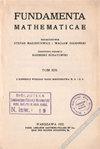非齐次谱的动力学方法
IF 0.5
3区 数学
Q3 MATHEMATICS
引用次数: 0
摘要
让$\alpha>0$$00$和$0<\gamma<1$。2012年,Hindman和Johnson扩展了这一结果,使其包含了其他几个关于大的概念:c集、j集、强中心集和分段合成集。我们采用动力学方法来解决这一问题,并建立了谱保持性与悬架升力性质之间的对应关系。作为应用,我们给出了一些已知结果的统一证明,也得到了一些新的结果。本文章由计算机程序翻译,如有差异,请以英文原文为准。
A dynamical approach to nonhomogeneous spectra
Let $\alpha>0$ and $0<\gamma<1$. Define $g_{\alpha,\gamma}\colon \mathbb{N}\to\mathbb{N}_0$ by $g_{\alpha,\gamma}(n)=\lfloor n\alpha +\gamma\rfloor$, where $\lfloor x \rfloor$ is the largest integer less than or equal to $x$. The set $g_{\alpha,\gamma}(\mathbb{N})=\{g_{\alpha,\gamma}(n)\colon n\in\mathbb{N}\}$ is called the $\gamma$-nonhomogeneous spectrum of $\alpha$. By extension, the functions $g_{\alpha,\gamma}$ are referred to as spectra. In 1996, Bergelson, Hindman and Kra showed that the functions $g_{\alpha,\gamma}$ preserve some largeness of subsets of $\mathbb{N}$, that is, if a subset $A$ of $\mathbb{N}$ is an IP-set, a central set, an IP$^*$-set, or a central$^*$-set, then $g_{\alpha,\gamma}(A)$ is the corresponding object for all $\alpha>0$ and $0<\gamma<1$. In 2012, Hindman and Johnson extended this result to include several other notions of largeness: C-sets, J-sets, strongly central sets, and piecewise syndetic sets. We adopt a dynamical approach to this issue and build a correspondence between the preservation of spectra and the lift property of suspension. As an application, we give a unified proof of some known results and also obtain some new results.
求助全文
通过发布文献求助,成功后即可免费获取论文全文。
去求助
来源期刊

Fundamenta Mathematicae
数学-数学
CiteScore
1.00
自引率
0.00%
发文量
44
审稿时长
6-12 weeks
期刊介绍:
FUNDAMENTA MATHEMATICAE concentrates on papers devoted to
Set Theory,
Mathematical Logic and Foundations of Mathematics,
Topology and its Interactions with Algebra,
Dynamical Systems.
 求助内容:
求助内容: 应助结果提醒方式:
应助结果提醒方式:


